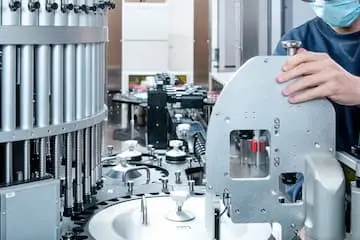Vacuum induction furnaces are essential in industries requiring high-purity metal melting and alloy production. Our range includes the Vacuum Induction Melting Furnace, ideal for aerospace and electronic applications, and the Vacuum Levitation Melting Furnace, perfect for high melting point metals. For research, the Vacuum Melt Spinning System is designed for metastable materials. Additionally, our Vacuum Arc Furnace excels in melting refractory metals, while the 600T Vacuum Induction Hot Press Furnace is tailored for high-temperature sintering. Each product ensures precise temperature control, contamination-free processing, and superior material quality.
Toggle Categories
Get Instant Support
Choose your preferred way to connect with our team
-
Get Free Quote Fill out form for detailed pricing
-
Send Email Detailed inquiry support
-
WhatsApp Quick mobile chat
Response Time
Within 8 hours on working days, 24 hours on holidays
vacuum induction furnace
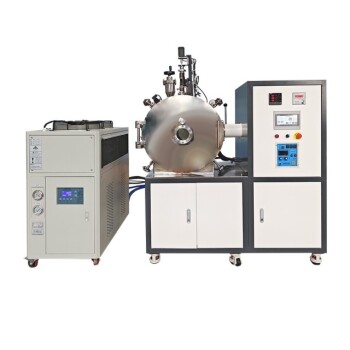
Lab-Scale Vacuum Induction Melting Furnace
Item Number : KT-VI
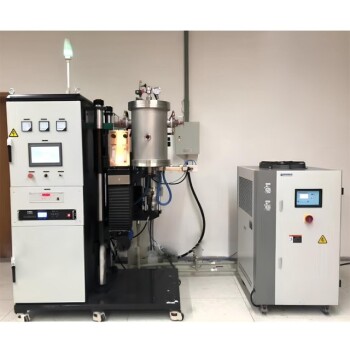
Vacuum Heat Treat and Molybdenum Wire Sintering Furnace for Vacuum Sintering
Item Number : KT-VMW
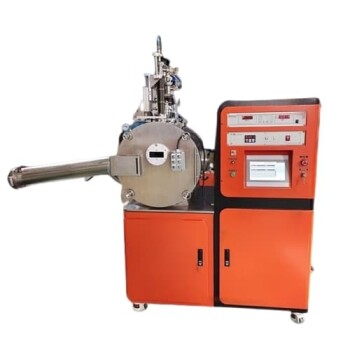
Vacuum Induction Melting Spinning System Arc Melting Furnace
Item Number : KT-VIS
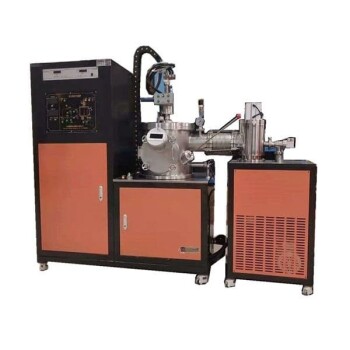
Vacuum Arc Induction Melting Furnace
Item Number : KT-VA
Detailed Overview of Vacuum Induction Furnaces
Vacuum induction furnaces are at the forefront of modern metallurgy, offering unparalleled precision and purity in metal melting processes. These furnaces operate under a vacuum environment, which eliminates the presence of oxygen and other reactive gases, ensuring that the metals remain uncontaminated and of the highest quality. This is particularly crucial for industries such as aerospace, nuclear energy, and electronics, where material integrity is paramount.
Key Features and Benefits
-
High Purity Melting: The vacuum environment prevents oxidation and contamination, resulting in metals and alloys with exceptional purity. This is vital for applications requiring high-performance materials, such as in the aerospace and defense industries.
-
Precise Temperature Control: Advanced induction heating technology allows for precise control over the melting process, ensuring uniform temperature distribution and consistent material properties.
-
Versatility: Our vacuum induction furnaces are capable of melting a wide range of metals and alloys, including nickel-based, cobalt-based, and iron-based high-temperature alloys, stainless steel, tool steel, and more.
-
Environmental Benefits: The vacuum process eliminates the need for chemical deoxidizers, reducing environmental impact and enhancing workplace safety.
-
Customizable Solutions: We offer tailored furnace designs to meet specific industrial requirements, whether for research, production, or specialized applications.
Applications
- Aerospace and Defense: Producing high-strength, lightweight alloys for aircraft and missile components.
- Nuclear Energy: Melting and refining metals for reactor components and fuel rods.
- Electronics: Creating high-purity materials for semiconductors and electronic devices.
- Research and Development: Developing new alloys and materials with unique properties for various industrial applications.
Why Choose Our Vacuum Induction Furnaces?
Our vacuum induction furnaces are engineered with cutting-edge technology to deliver superior performance and reliability. With a focus on innovation and quality, we provide solutions that meet the stringent demands of modern industry. Our team of experts is dedicated to supporting you through every step, from initial consultation to installation and beyond.
Contact us today to learn more about how our vacuum induction furnaces can enhance your production processes. Leave a message to discuss your specific needs and discover the perfect solution for your application.
FAQ
What Is A Vacuum Induction Furnace And How Does It Work?
What Are The Main Applications Of Vacuum Induction Furnaces?
What Are The Advantages Of Using A Vacuum Induction Furnace?
What Types Of Materials Can Be Processed In A Vacuum Induction Furnace?
How Does The Vacuum Environment In A Vacuum Induction Furnace Improve Material Properties?
REQUEST A QUOTE
Our professional team will reply to you within one business day. Please feel free to contact us!
Related Articles

How to Choose and Optimize Water Circulating Vacuum Pumps for Your Lab
Learn how to choose and optimize water circulating vacuum pumps for lab applications, balancing efficiency and reliability.

How to Choose Crucible Materials That Prevent Chemical Degradation in Vacuum Induction Melting
Learn how to choose crucible materials for vacuum induction melting to prevent chemical degradation and optimize alloy purity. Essential guide for industrial applications.

How Vacuum Induction Melting Prevents Catastrophic Material Failures in Critical Components
Discover how Vacuum Induction Melting (VIM) prevents material failures in aerospace, nuclear, and EV components by eliminating atomic-level contamination.

How Vacuum Induction Melting Elevates High-Performance Alloy Production
Discover how Vacuum Induction Melting (VIM) enhances alloy purity, reduces defects, and optimizes costs for aerospace and energy sectors.

How Vacuum Induction Melting Outperforms Traditional Methods in Advanced Alloy Production
Discover how vacuum induction melting (VIM) outperforms traditional methods in advanced alloy production, offering precision, purity, and cost savings.

How Vacuum Induction Melting (VIM) Transforms High-Performance Alloy Production
Discover how Vacuum Induction Melting (VIM) enhances alloy purity for aerospace, medical, and nuclear industries, reducing defects and costs.

How Vacuum Induction Melting Ensures Unmatched Reliability in Critical Industries
Vacuum induction melting (VIM) ensures metallurgical purity, durability, and efficiency in aerospace, nuclear, and critical industries. Learn why VIM outperforms traditional methods.

How Vacuum Induction Melting Powers Superior Material Performance in Critical Industries
Discover how Vacuum Induction Melting (VIM) ensures 99.99% pure alloys for aerospace and medical industries, boosting performance and compliance.

How Freeze-Drying Cuts Transport Costs by 90% in Critical Logistics
Freeze-drying slashes transport costs by 90% in logistics for space, military, and disaster relief by reducing weight and volume. Learn how it works.

Why Freeze-Drying is Indispensable for Preserving Sensitive Samples
Freeze-drying preserves sensitive samples by sublimation, maintaining molecular integrity and enabling stable, room-temperature storage. Essential for proteins, vaccines, and volatile compounds.

How Freeze-Drying Protects Delicate Biological Structures During Water Removal
Freeze-drying preserves biological samples by removing water without structural damage, ideal for vaccines, enzymes, and microbial cultures. Learn how it works.

Preparation and Performance of Alumina Crucibles for Vacuum Induction Melting Furnace
This article discusses the preparation process and performance benefits of alumina crucibles for vacuum induction melting furnaces, emphasizing thermal stability and long service life.

Comprehensive Guide to Alumina Crucibles in Powder Metallurgy
An in-depth look at the properties, applications, and usage of alumina crucibles in powder metallurgy processes.

Comprehensive Overview of Vacuum Evaporation Systems
An in-depth look at vacuum evaporation systems, their principles, components, and applications.

Challenges in the Development and Application of Tantalum in Vacuum Deposition Equipment
This article discusses the role of tantalum in vacuum deposition equipment, focusing on its properties, manufacturing challenges, and its critical applications in industries like OLED screen production.

Preparation Technologies and Applications of High-Purity Metals
An in-depth look at the definition, preparation technologies, and applications of high-purity metals.

Emerging Green Solvents in Photovoltaic Module Recycling
Exploring the shift towards green solvents in PV module recycling, focusing on deep eutectic solvents and their advantages.

Advancements in Rare Earth Materials and Recycling Technologies
Explores new rare earth materials and recycling technologies, focusing on polishing, high-purity metals, and various recycling methods.

Sputtering Targets for Decorative Coatings
Overview of various sputtering targets used in decorative coatings for their unique properties and applications.

Introduction to the Casting Process for Sputtering Targets
A comprehensive guide to the casting process for sputtering targets, including suitable materials, advantages, and detailed process steps.
